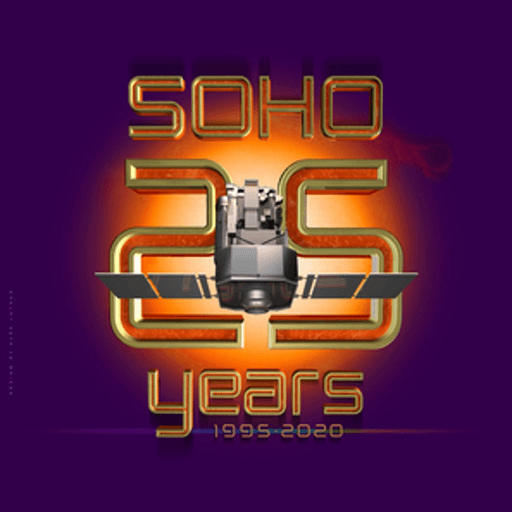Today, on 2 December 2020, the Solar and Heliospheric Observatory (SOHO) celebrates its 25th anniversary. Since its launch in 1995, this versatile spacecraft has earned its place in the space weather Hall-of-Fame, providing space weather forecasters a solid base to build on. Indeed, with its -at that time- high cadence EUV and white light imagery and coronagraphic images, it brought space weather monitoring and forecasting to a whole new level. As an STCE scientist puts it: "SOHO is THE satellite that allowed space weather to exist as we know it today."
SOHO, a combined ESA/NASA project, revolutionized space weather monitoring by providing imagery of the Sun in white light, 4 wavelengths in extreme ultraviolet (EUV), and magnetograms at a cadence of several images per hour. Its coronagraphs provided a view of the immediate surroundings of the Sun, allowing a good view on the ominous coronal mass ejections. More importantly, these images were available in near real-time, something unseen up to that time.
An icon in solar and heliospheric research, SOHO instruments have contributed to several other research domains, such as the solar wind (parameters, origin) or the solar interior (oscillations). There have been very few satellites that played such a groundbreaking role in a research domain than SOHO. The spacecraft is also the best comet chaser in history, having made its 4000th (four thousand!) comet discovery just a few months ago (15 June 2020 - see this NASA bulletin).
SOHO also has a special place in the heart of the STCE. Indeed, SOHO/EIT (EUV Imaging Telescope) was the start of the Belgian PRODEX program and the start of the space age at SIDC. The PROgramme for the Development of scientific EXperiments (PRODEX) is a programme of ESA in which Belgium, as member state of ESA, has been participating since 29 June 1988. Dr Fréderic Clette, the current head of SILSO was the first EIT PRODEX-postdoc at the Royal Observatory of Belgium (ROB). EIT was the first EUV imager in which the STCE got involved: The Solar Physics Department of the Royal Observatory of Belgium (ROB) and the Centre Spatial de Liège (CSL) contributed to the instrument development, calibration and in-flight control (see this SIDC page). This tradition continued with PROBA2/SWAP and Solar Orbiter/EUI. Indirectly, the EIT experience also made the emergence of space weather operations at ROB possible.
SOHO had a near-death experience in 1998 after a loss of control on 24 June. Fortunately, using the late ARECIBO radio telescope on Puerto Rico (see this NATURE article), ground controllers heroically regained contact with and control of the spacecraft over the next few months (see this NASA bulletin). It's the longest single period in SOHO's operational life without imagery, and it became known as "SOHO's holiday". Eventually, this workhorse of the solar scientists and space weather specialists would become superseded by the Solar Dynamics Observatory in 2010, which had a much higher resolution and image cadence. However, the telemetry gained by stopping SOHO's solar disk imagery was used to boost the cadence of the coronagraphic images to one image every 12 minutes, for both coronagraphs. That is why, up to this day, SOHO remains the main spacecraft delivering the so critical coronagraphic imagery.
Underneath a clip with some of the most iconic images made by the SOHO instruments. There's also a small movie containing a selection of the most spectacular events observed by SOHO. NASA/GSFC also released an incredible movie with coronagraphic imagery taken by SOHO since 1998 and available at YouTube. More information, imagery, contests,... can be found on the SOHO website.
Many congratulations to the SOHO team and all who contributed to this ongoing and incredibly successful solar mission!






